By far the most interesting thing about Cuba for us has been seeing how life works in a truly communist place that still subscribes to the utopian socialist ideas of Karl Marx. Since the fall of the Soviet Union, examples of places still experimenting with these ideas have become difficult to find Most people who’ve read the Communist Manifesto would probably agree that the whole scheme sounds deceptively appealing on paper – if we all work together for the benefit of society instead of pursuing our own personal self interests, everybody will benefit. For anyone still holding onto some kind of misguided hope that this concept might actually work in reality, a visit to Cuba should quickly dispatch such thoughts.
We’ve been doing a healthy mix of sailing and exploring the interior of Cuba for the past week. Our passages have been mostly uneventful, mainly because Cuba doesn’t have a whole lot to offer for cruising sailors. Partially this is because of the embargo by the United States, partially its because Cubans aren’t allowed to own boats (they’d simply sail away if they had the means), and partially its because the bureaucracy here still scares off many sailors who generally don’t like filling out hours of paperwork and being subjected to searches each time they arrive or leave any port. It’s also a dangerous place to sail thanks to extensive shallow areas off the southern coast, poor nautical charts (maps), and little in the way of help if you have any problems (we were forced to perform a rescue of a grounded sailboat after Cuban Coast Guard failed to respond to emergency radio calls). Nonetheless we’re making new yachtie friends each place we stop, a task made easy by the fact that so few sailors make it this far from the beaten path.
Ashore we’ve been discussing the situation here with locals and trying to make sense of this bizarre political and economic system that’s difficult to even comprehend for a westerner living in a more capitalistic place. With all means of production owned by the state, the concept of a company doesn’t really exist here. Everything from the restaurants to the gas stations to the grocery stores to the chicken farms to the news outlets to the cell phone provider to the boat marinas to the beer makers… all of it… is owned and run by the government, meaning the entire population is employed by this one gigantic all-powerful entity – the state is everywhere. Regardless of a person’s profession, the pay (and food ration allocation) is roughly equal for everyone, there is no possibility of climbing any sort of economic ladder, and incentives to create and innovate simply don’t exist. For these reasons, the people here have few choices to make – everything in this mostly generic world is decided by the Cuban government and the country is effectively frozen in time. It feels like an experiment gone wrong because, as the fall of Communism in Eastern Europe over 20 years ago clearly demonstrated, that’s exactly what this is. Without the relentless propaganda campaign and strict control (blockade) over all information flow, the people might organize themselves a rebellion. Fortunately for the Castro regime this seems to be a concern for the future, but not for now.
It’s also becoming clear to us as we spend more time exploring the interior that the Cuban people are doing pretty well under the circumstances to circumvent the Marxist rules in pursuit of their own self interests. Capitalism, albeit in some of its least healthy forms, seeps in through the cracks everywhere, meaning there’s an underground market for almost everything. Non-sanctioned taxis undercut state taxi prices by miles. Tobacco farmers sell cigars for a fraction of the price of official “Cohibas” and “Monte Cristos”. A midnight trip to Key West aboard a 1000 horespower black cigarette boat can be bought for $10,000. Prostitution is so rampant here that a group of three visiting western guys could be forgiven, in our opinion, for presuming most youthful Cuban women to be prostitutes until proven otherwise.
It’s our last night in Cuba before heading south towards Jamaica. The Mahi Mahi is now defrosted because we’ve invited our new Swedish friends Ola and Caroline over for dinner on the boat tonight, then we’re all off for some entertainment at the local (state run of course) Karaoke joint…. and here they are “yoo hooing” on our back deck now, so gotta run.
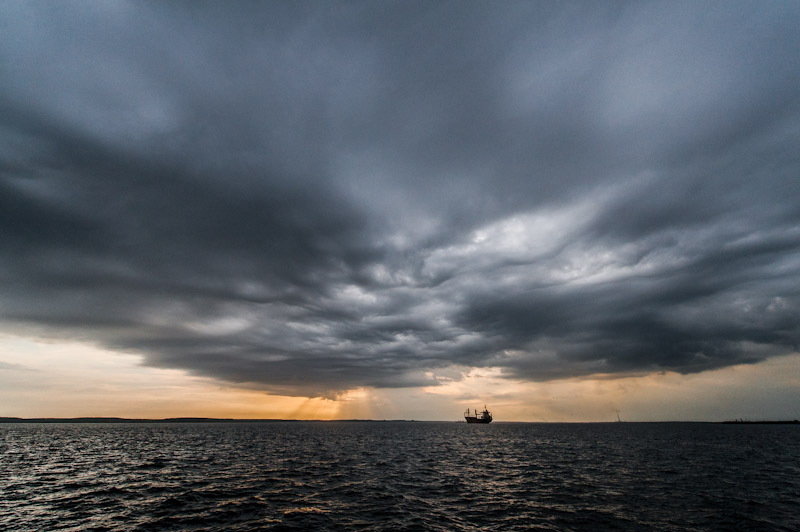
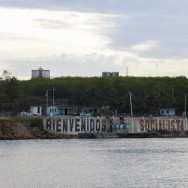
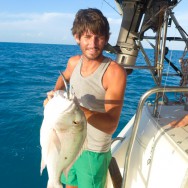
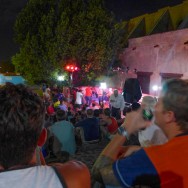
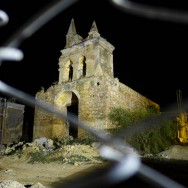
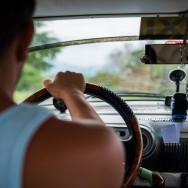
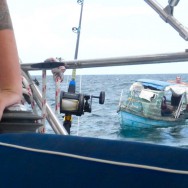
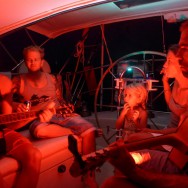
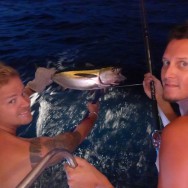
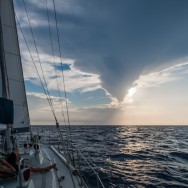
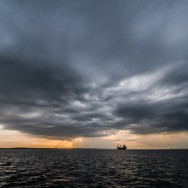
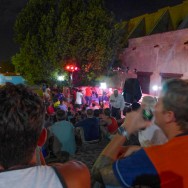
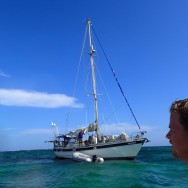
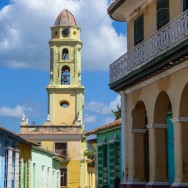
I just love love love reading about your adventures, I’ve followed your blog ever since you started your amazing journey. You are very brave to go to some of the places you’ve been, Cuba sounds amazing, but scary! We live aboard our yacht permanently, but are content to sail around the many Greek islands.
I love the way your blog is set out, with the photos at the top etc. which blogsite do you use? Is there any chance that mine will look that good, one day?
Keep up the good work, and good luck with the next part of your trip.
what an insight – fascinating – thank you so much
Your descriptions of Cuba have been educational eye-openers and you’ve certainly made the most of that much-maligned country with your variety of crazy and adventurous experiences ….
Bravo for aiding that reef-bound yacht, and we’re captivated by your melange of interesting ‘friends’, karaoke sessions, guitar strumming evenings, fishy dinners and, of course, fabulous photos.
What a couple of fellas!
A great, honest look at life in Cuba today. The Cubans one meets in the States are for the most part honest, friendly and fun loving people. I don’t think it would take long for the island nation to turn around if the leaders would give up their broken dreams